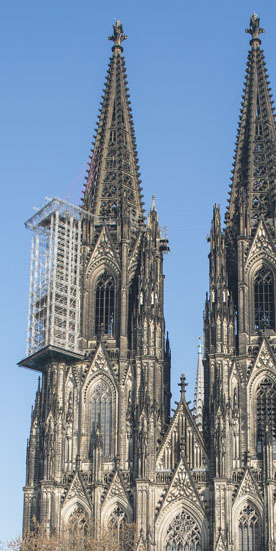Engineering repairs of significant historic buildings between 1920 and 1983, using the example of sacred structures

The proposed dissertation will examine the history of the engineering restoration of historic buildings between 1920 and 1983 by focusing on sacred structures, taking the static-constructional implementation and the social embedding into account. The restoration of churches and cathedrals clearly elucidates the possible conflict between engineering and art.
Until the 19th century, historic buildings were mainly restored in order to maintain their usability and representational value. However, in the 20th century, a new era of restoring historic buildings for the preservation of substance illustrated a change of goals in monument conservation. The engineer, with his increasing technical abilities, became a crucial protagonist. Accordingly, the research will focus on the work of four influential personalities of this discipline: Georg Rüth (1880–1945), Josef Pirlet (1880–1961), Wilhelm Schorn (1895–1968) and Klaus Pieper (1913–1995).
The study will make use of contemporary literature, analyse archived planning and working documents, and document research on selected sacred structures. By comparing the approaches and concepts of monument conservation before and after the Second World War, the dissertation will analyse and interpret the mindsets and value systems with respect to the changing historical background.
This project collaborates with the Dombauhütte Köln (Workshop of Köln Cathedral).
Researcher: Michael Maria Bastgen
